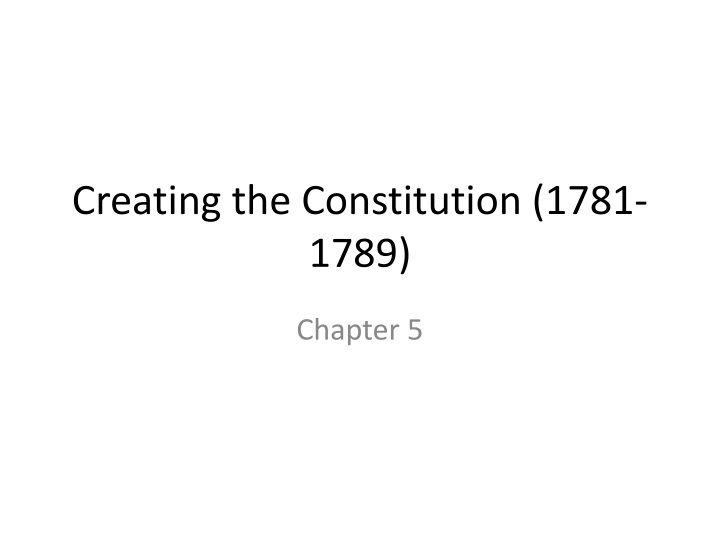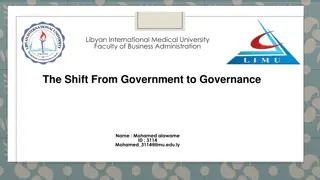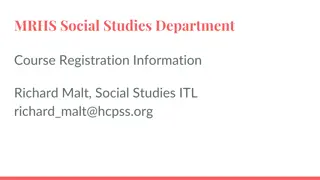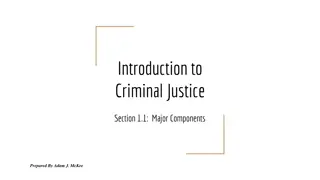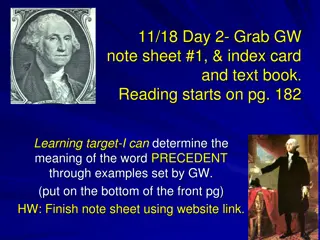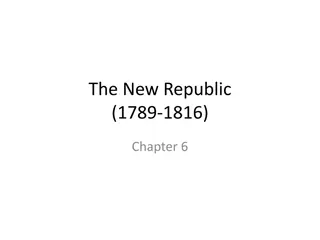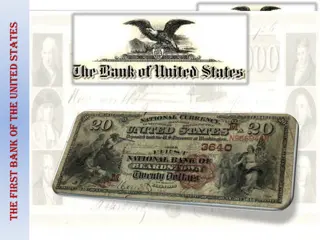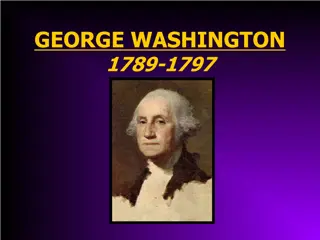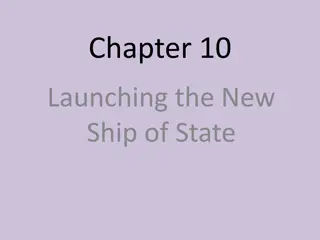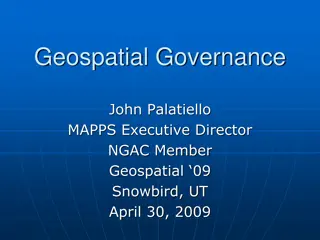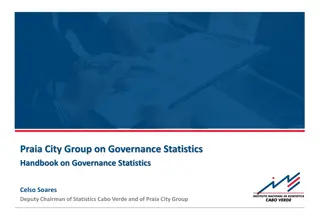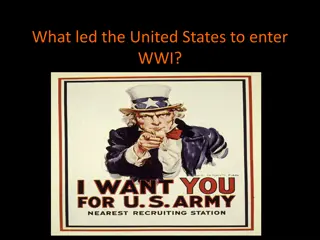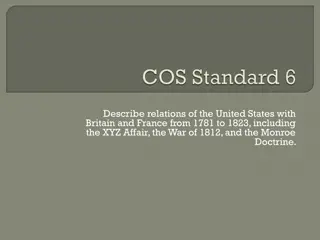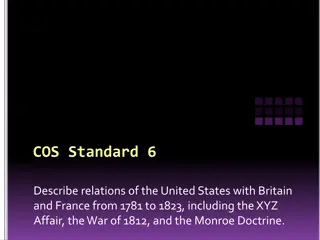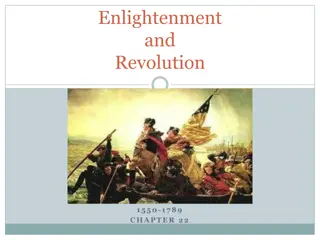The Evolution of Governance in the United States (1781-1789)
This chapter explores the pivotal period from 1781 to 1789 in US history, focusing on the creation of the Constitution. It covers the challenges of the Articles of Confederation, the legislative branches, freedom of religion controversies, financial weaknesses, events like Shays' Rebellion, and the need for a new form of government. The narrative highlights the shift from a loose confederation of states to a stronger federal system that paved the way for the modern governance framework in the US.
Download Presentation

Please find below an Image/Link to download the presentation.
The content on the website is provided AS IS for your information and personal use only. It may not be sold, licensed, or shared on other websites without obtaining consent from the author.If you encounter any issues during the download, it is possible that the publisher has removed the file from their server.
You are allowed to download the files provided on this website for personal or commercial use, subject to the condition that they are used lawfully. All files are the property of their respective owners.
The content on the website is provided AS IS for your information and personal use only. It may not be sold, licensed, or shared on other websites without obtaining consent from the author.
E N D
Presentation Transcript
Creating the Constitution (1781- 1789) Chapter 5
A Confederation of States Section 1
Legislative Branches (Congress) Unicameral 1 House Bicameral 2 Houses (Strong Governor) Weak or no Governor 1. Senate: Wealthy and well educated 2. House of Representatives: Common voters Members elected by the people
Freedom of Religion Very controversial (not popular) at the time Usually people lived in areas that practiced the same religion as them After the AMERICAN REVOLUTION religious freedom became the norm
Articles of Confederation (1stGovt. of the U.S) Passed in 1781 Limited national govt. Established a FRIENDSHIP among states Would help each other in time of WAR Other than that had their own laws
Western Lands (Expansion) Northwest Territory Area of present day U.S that is North of Ohio and West of PA
Land Ordinance 1785 Sold public land to earn govt. MONEY Divided in TOWNSHIPS (6sq mi.) Each townships was then divided in SECTIONS (1sq. Mi.) Sold for $1 per section
Financial Weaknesses No common currency (money) Federal govt. did not TAX / couldn t raise money Had to borrow money Woman juggling finances Animated Clipart Could not pay DEBT to other countries
Shays Rebellion (MA) Lawmakers set heaviest TAX ever to pay the war debt Hurts farmers in the west the most Reminded them of British taxes Daniel Shay leads small army to Springfield in hopes of seizing a federal ARMORY
Continued Congress is able to raise a small army and barely put down the rebellion Congress realizes the Articles of Confederation don t do enough to protect the states (army too small) Result: Realize they need a new form of govt. to protect itself
Section 1 Review: 1. Compare UNICAMERAL to BICAMERAL. 2. What was the 1stGovt. of the U.S? 3. How big were TOWNSHIPS? SECTIONS? 4. What were some financial weaknesses of the new govt.?
Drafting (Writing) the Constitution Section 2
The Convention May September 1787 Philadelphia PA Hottest summer on record / windows closed 55 delegates from ages 27 81 Goal: Create the Constitution of the U.S
Virginia Plan Submitted by Edmund Randolph of VA Favored larger, more populated states Each state would have representation based on population More people = More power
New Jersey Plan Equals Sign Flashing Animated Clipart Proposed by William Patterson Favored smaller / less populated Equal representation 1 state / 1 vote
Handshake around Globe Animated Clipart Great Compromise Roger Sherman of Connecticut Legislative branch (CONGRESS) made of 2 houses Senate (fixed) and House of Representatives (vary) Both large and small states agree to it
Congress (2 Houses) House of Representatives Senate Elected every 6 years Elected every 2 years Equal representation Representation based on population Ex. More people = more representatives Ex. Each state has 2 no matter the population
3/5 Compromise If slaves were counted towards population, southern states would be strong If not they would be weak Compromise: 3/5 (60%) of slaves would count towards the states TOTAL population
Example If a state had 50 slaves they would count as 30 people If a state had 100 slaves they would count as 60 people Can use cross multiplication to solve equation as well
President (Executive Branch) President term was created and set at 4 years Reelected as many times as people wished Chosen by Electoral College Power to choose Judges and control the army (Commander in Chief) Can t declare war
Supreme Court (Judicial Branch) Chosen by president (not elected) / affirmed by congress 9 Justices total / last branch created at Convention Terms last for LIFE / unless: Retirement / Death / Crime
Section 2 Review: 1. Where was the Convention? What was its purpose? 2. How were the NJ and VA plans different? 3. How did the 3/5 Compromise work? 4. How long is the PRESIDENTS term? Supreme Court Justice?
Ratifying (Approving) the Constitution Section 3
The Federalists Believed in a strong national govt. / powerful army (expensive) Supported the Constitution Claimed states were not strong enough on their own Led by Alexander Hamilton
Anti - Federalists Opposed a strong national govt. / small army (cheap) Opposed the Constitution Wanted a Bill of Rights to protect the people Led by Thomas Jefferson
Federalist Papers 85 essays calling for a new govt. with a strong national govt. Written by: Alexander Hamilton, John Jay and James Madison Claimed if the states did not UNITE they would be conquered by a European nation
Federalists Win Because. 1. AOC had serious flaws that had to be fixed 2. Had a plan the Constitution 3. Well organized and stayed in close contact 4. Had George Washington s support
Blue Colored Pencil Drawing Animated Clipart Ratified! (approved) Dec 1787 Delaware becomes 1ststate to ratify June 1788 New Hampshire becomes 9thstate to ratify (needed 9 to pass) May 1790 Rhode Island becomes 13th(last) state to ratify
Bill of Rights 1st10 amendments to the Constitution Protect our individual rights Amendments #1-3 (Liberty) Dobermans Guarding Gate Animated Clipart Amendments #4-8 (Justice)
Section 3 Review 1. List 2 facts about the Federalists. 2. List 2 facts about the Anti-Federalists. 3. Who were the authors of the Federalist Papers? 4. What state was the 1stto ratify? The 9th?
